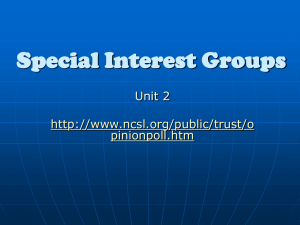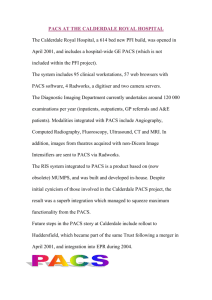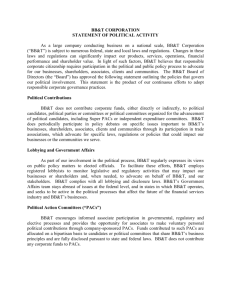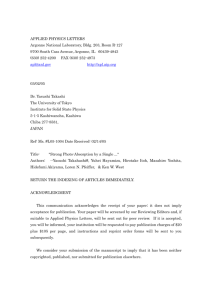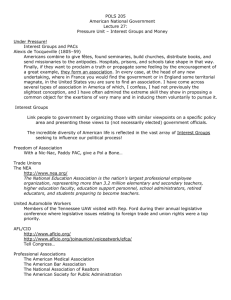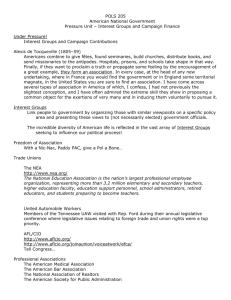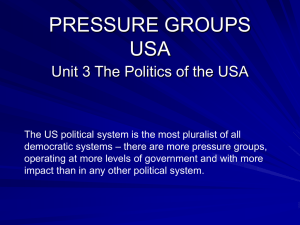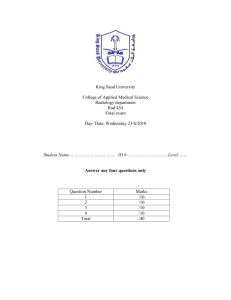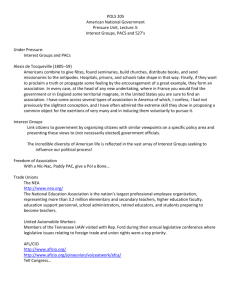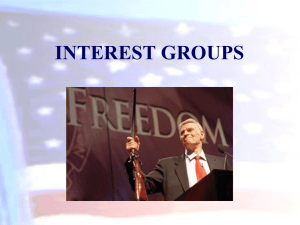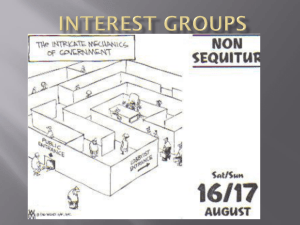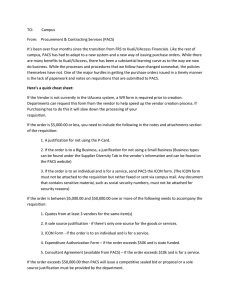interest groups
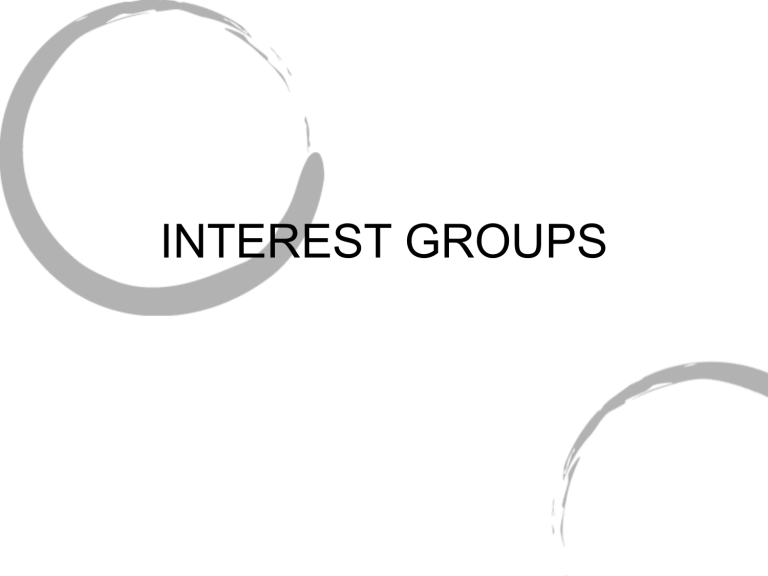
INTEREST GROUPS
Why are interest groups sp common?
• Many kinds of cleavages in the country mean that there are many different interests.
• Constitution provides many access points to the government (federalism)
• Political parties are weak so interests work directly on government.
History of Interest Groups
• 70% of interest groups have an office in
Washington D.C.
• 1800s- religious association, antislavery groups, trade unions
• 1900s- business associations, charitable organizations
• 1960s- environmental groups, consumer groups
Factors explaining the rise of interest groups
• 1)Broad economic developments create new interests, redefine old interests
• 2)Government policies- ex: wars create veterans who demand benefits
• 3)Emergence of strong leaders usually from a social movement
• Ex: civil rights, anti-war movements
Types of Organizations
• Interest group- any organization that seeks to influence public policy
• Types:
• 1) business- most powerful
• 2) unions- most declining
• 3) social, professional, charitable
• Americans have great sense of efficacy, much more likely to join an interest group when compared to other nations.
Incentives to Join
• 1) solidary incentives- pleasure, companionship
• Organized as coalitions of small local units
• Ex: NAACP, Rotary, Parent-Teacher
Association, American Legion
• 2) material incentives- $$, services
• Ex: AARP, farm organizations
Incentives to Join
• Purposive incentives- goal/purpose of the organization itself
• This group also benefits nonmembers..these people are called free riders.
• Public Interest groups- usually created to benefit those who are not represented by interest groups.
Social Movements
• Definition- a widely shared demand for change in the social or political order.
• Movements may spawn many organizations.
• More extreme organizations will be smaller and more activist.
• More moderate organizations will be larger and less activist.
Funds for interest groups
• 1) membership fees
• 2) foundation/federal grants
• 3) direct mail
• a) unique to modern interest groups
• b) computers allow groups to specialize audience.
• c) very expensive - need at least 2% return to be effective.
Direct mail techniques
• 1) teaser on envelope
• 2) letter arouses emotions
• 3) famous-name endorsement
• 4) personalization of letter
Facts about interest groups
• 1) those who are more affluent are more likely to join and be active.
• 2) business/professional groups are more numerous and better financed.
• 3) Minorities, consumers, and the disadvantaged are slighted by the interest groups.
Interest Groups in Action
• The most important tactic of interest groups is to SUPPLY CREDIBLE
INFORMATION.
• Detailed, current information can build/destroy a legislator/lobbyist relationship.
• Most effective on narrow,technical issues
Political Cues
• Officials need political cues regarding what values are at stake and how that fits with their own political beliefs.
• So groups may establish informal coalitions based on their general political ideology.
• Rating systems are intended to generate support or opposition for legislators.
Public Support
• Face to face contact between lobbyist and legislator or staff most common.
• Grassroots mobilization can impact policies passed/defeated in Congress.
• Politicians dislike controversy so they tend to work with interest groups that they agree with.
Money and PACS
• Money is the least influential way to affect politics.
• FECA 1973/1974:
• 1) restricted amounts interests can give to candidates.
• 2) made it legal for corporations and unions to create PACS.
Rapid Growth of PACS
• More money available to all candidates
• Members (Congress) are establishing their own PACS to further their own causes.
• Over 1/2 of PACS are sponsored by corporations.
Who gets the money?
• Incumbents get the most PAC money.
• Labor PACS give almost exclusively to
Democrats.
• Business PACS are split.
• Democrats usually receive more PAC money.
Revolving Door
• This term refers to those who work for the government and then PACS and vice versa.
• Can sometimes lead to corruption.
Regulating Interest Groups
• They are protected by the 1st amendment.
• 1995 Lobbying Act:
• 1) requires reports twice a year to include client names, expenditures, and issues
• 2) Justice Department may investigate.
Summary
• Interest groups have a disproportionate influence on policy because the average citizen does not pay attention.
• The more narrow the issue, the more influence they have, including being asked to help draw up legislation to be proposed to Congress, and aid in the carrying out of that policy.
